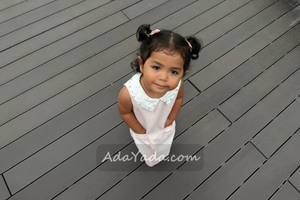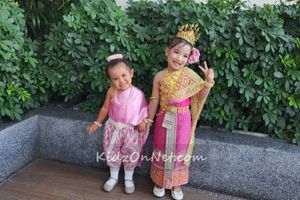- Introduction: Safety, Comfort, and Culture—Designing with Heart
- 1) Why Safety Comes First in Nursery Design
- 2) Nursery Essentials Checklist: Must-Have Furniture & Gear
- 3) Creating a Cozy and Comfortable Environment
- 4) Layout & Space Planning
- 5) Nursery Safety Checklist: A Room-by-Room Walkthrough
- 6) Style & Personal Touch: Beauty that Works Hard
- 7) Shopping & Budgeting: Splurge, Save, and Source Smart
- 8) Timeline & Preparation: From Third Trimester to Homecoming
- Quick Reference: Essentials to Review Before Baby Arrives
- Conclusion: The Calm You Build Today Becomes Tomorrow’s Rhythm
- 📌 FAQs with SEO-friendly Answers
Introduction: Safety, Comfort, and Culture—Designing with Heart
Every parent wants a room that feels like a hug—soft light, calming colors, and a layout that flows when you’re half-asleep at 3 A.M. But the coziest room only truly works when it’s safe. This guide blends practical design with cultural insight (especially useful in warm, humid climates like Thailand) so your nursery feels peaceful, functions smoothly, and follows best-practice safety standards. We’ll take you from big decisions (cribs, dressers, lighting) to small details (cord keepers, outlet covers, breathable bedding) with a step-by-step nursery essentials checklist you can follow. Along the way, we’ll reference a room-by-room nursery safety checklist so nothing gets missed while you shop, assemble, and style.
👉 “When your child begins nursery school, our toddler first year nursery essentials checklist will guide you through what to pack.”*
1) Why Safety Comes First in Nursery Design
Before you pick the color palette or the perfect elephant mobile, anchor your plan in safety. Infants need a clear, hazard-free environment—no loose cords, no tippy furniture, and a sleep space that’s firm, flat, and free of extras. In hotter climates, you’ll also balance temperature and airflow with safe sleep guidelines (no fans pointing directly at baby, no bulky blankets).
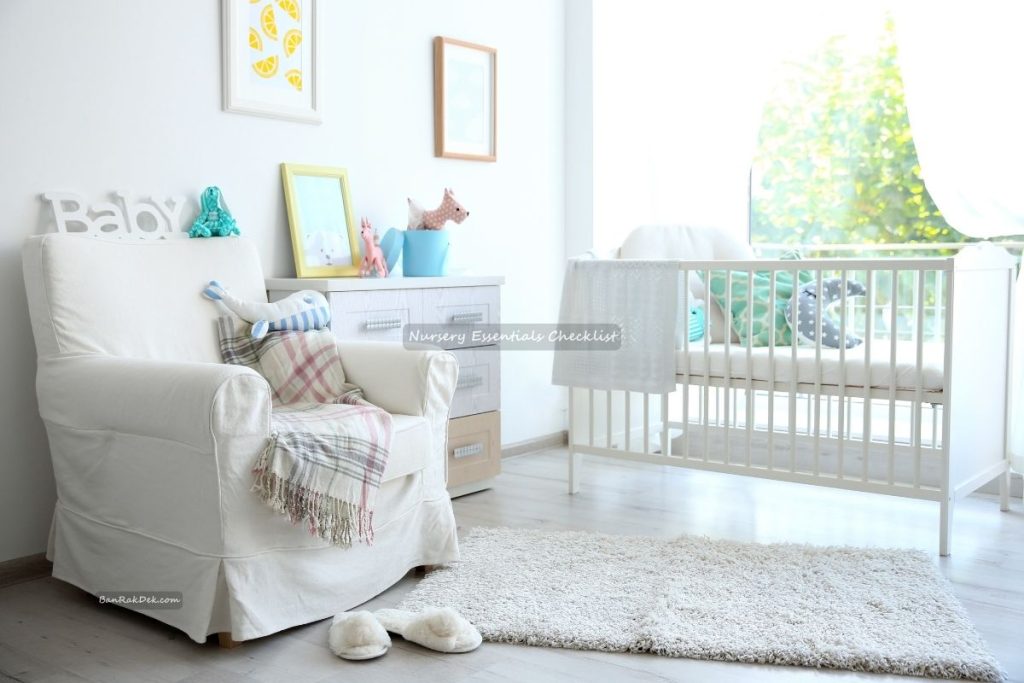
Childproofing basics to set from day one
- Anchor furniture: Use anti-tip straps for dressers, bookshelves, and wardrobes.
- Manage cords: Keep window-blind cords and cables out of reach; install cord winders or cleats.
- Cover outlets: Choose sliding safety plates or secure plug covers.
- Create safe pathways: Night-time feeds are easier when walkways are clear.
Safe sleep foundations
- Firm mattress with a snug fitted sheet.
- No pillows, quilts, bumpers, or stuffed toys in the crib.
- Place baby on their back for every sleep.
- Keep the crib away from windows, dangling cords, and wall art.
When in doubt, walk through a mental nursery safety checklist and fix what’s easy now—anchors, covers, clearances—before décor distracts you. Comfort can wait a day; safety can’t.
2) Nursery Essentials Checklist: Must-Have Furniture & Gear
Think of this section as your master shopping plan. It prioritizes durability, ergonomics, and items you’ll use daily. If you’re in a smaller condo or a Thai townhouse with compact bedrooms, these choices help you maximize every centimeter without overwhelming the space.
👉 “Looking to furnish your nursery without breaking the bank? Don’t miss our guide on Budget-Friendly Kids Furniture.”
Core furniture
- Crib (or cot): Look for solid slats (no broken hardware), non-toxic finishes, and adjustable mattress heights.
- Crib mattress: Firm, breathable, and the right dimensions for a snug fit—no gapping at the edges.
- Dresser + changing setup: A waist-height surface saves your back. A dresser-top changing mat is versatile; add non-slip pads and anchor the dresser.
- Glider/rocker: Test for quiet motion; armrests should support you during feeds.
- Side table: Holds water, burp cloths, and a small lamp within easy reach.
Smart storage
- Open bins & cubes: Rotate toys and essentials; label in English/Thai for caregivers (e.g., ผ้าอ้อม/diapers).
- Closet dividers: Sort by size (0–3M, 3–6M).
- Under-crib boxes: Perfect for spare linens and seasonal items.
- Door organizers: Keep nail clippers, thermometers, and spare pacifiers off surfaces.
Daily-use gear
- Breathable bedding: Two to three fitted sheets and light sleep sacks.
- White-noise machine: Smooths street sounds and AC cycles in urban Thai neighborhoods.
- Soft, warm-tone lighting: A dimmable lamp or night light for low-stimulus feeds.
- Hygrometer/thermometer: Aim for ~20–22°C with humidity around 40–60% (use AC/dehumidifying mode as needed).
- Laundry hamper: Ventilated; line it for easy wash days.
- Health & grooming kit: Nasal aspirator, baby nail scissors, digital thermometer.
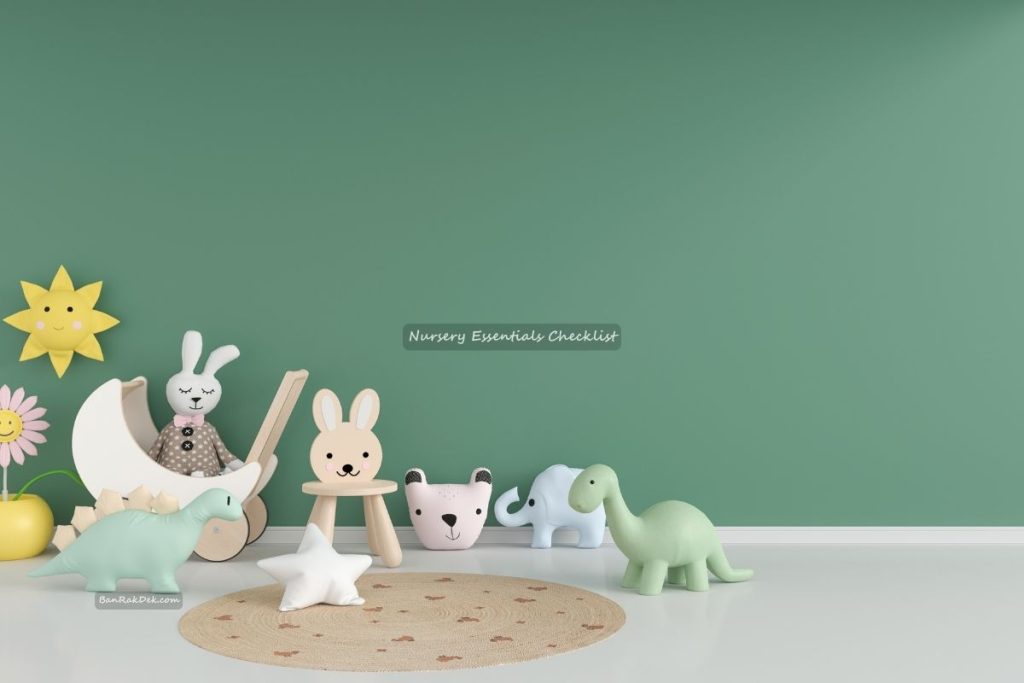
Use this nursery essentials checklist as you plan the layout, shop sales, or compare local brands. If family offers gifts, share the link to avoid duplicates. At the end of setup, do a quick pass and tick off any remaining items in your nursery essentials checklist so you can focus on rest before baby arrives.
3) Creating a Cozy and Comfortable Environment
Your child’s senses are developing fast—so think in layers: light, sound, temperature, and touch. In tropical climates, the goal is calm without overheating.
Light:
- Use soft, indirect lighting; a lampshade or wall-wash sconce reduces glare.
- Blackout curtains help daytime naps; mount safely so cords and tiebacks are out of reach.
- Avoid bright overheads during night feeds—keep a low lumen path to the crib and chair.
Sound:
- A white-noise machine on a steady “fan” or “rain” setting helps mask scooters, barking dogs, and hallway echo.
- Keep it across the room at low volume; think of it as audio wallpaper.
Temperature & humidity:
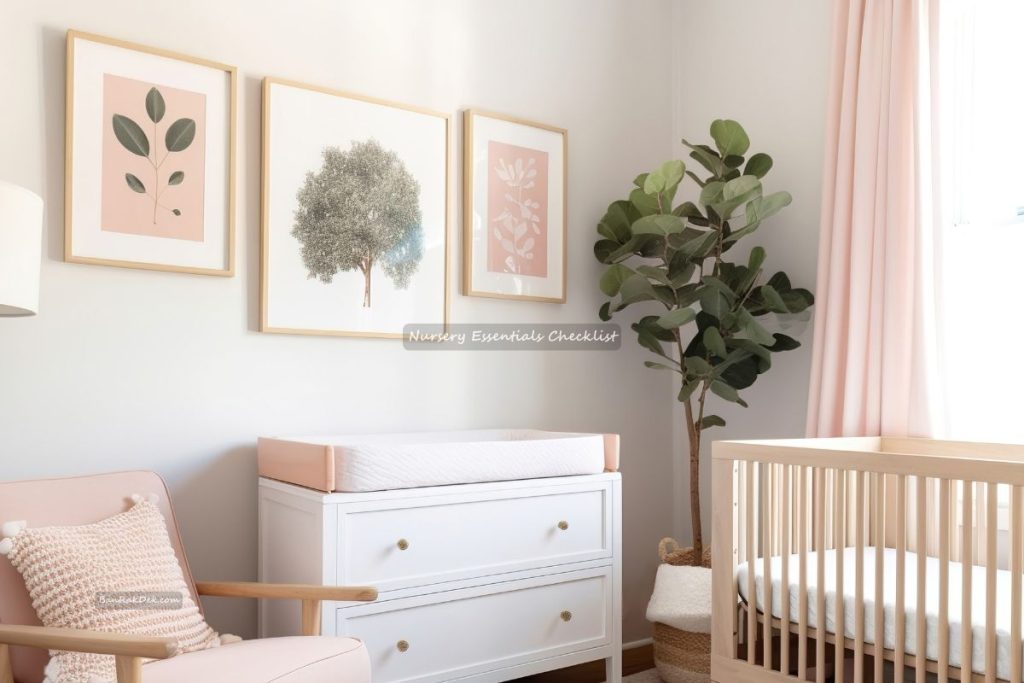
- Target ~20–22°C with humidity ~40–60%. In Thailand, AC plus a hygrometer makes fine-tuning easy.
- Position the crib away from direct AC airflow; use the “swing” setting to diffuse cool air.
Textures & textiles:
- Choose breathable, natural fibers (muslin, cotton).
- Wash new linens before use; pick fragrance-free detergents to reduce irritation.
- Keep plush throws and pillows for the chair, not the crib.
Decor can be cultural, charming, and safe: a framed fabric print with Thai motifs, an elephant plush on a shelf (not in the crib), or a lotus-patterned rug with anti-slip backing. Cozy doesn’t require clutter—edit until the room feels calm.
4) Layout & Space Planning
A well-planned nursery is zoned like a tiny studio apartment: sleep, change, feed, and store. That flow saves hours over the first year.
Sleep zone
- Place the crib on an interior wall (cooler, quieter) and at least an arm’s length from windows and curtains.
- Keep 60–90 cm of clearance for changing sheets and lifting baby safely.
Change zone
- Dresser-top changing mat + a caddy for diapers, wipes, cream, sanitizer.
- Anchor the dresser; secure the mat with non-slip grips.
- Add a soft, washable rug underfoot for comfort during middle-of-the-night changes.
Feed zone
- Glider/rocker angled slightly toward the crib.
- Side table for water, lamp, and burp cloths.
- Outlet access for a phone charger, pump, or nightlight (with cords managed and covered).
Small nursery layout hacks
- Use vertical storage: floating shelves placed high and away from the crib.
- Under-crib bins for linens and seasonal clothes.
- Mirror the door’s swing with a door organizer so it doesn’t collide.
- In a room-share scenario, a folding screen or curtain can visually separate baby’s area.
As you fine-tune the floor plan, cross-reference the nursery essentials checklist so you’re not missing a practical piece that would streamline the flow.
5) Nursery Safety Checklist: A Room-by-Room Walkthrough
This section is your final pass—the quick but thorough audit that turns a pretty room into a safe one. Walk clockwise from the door and inspect from floor level (yes, get down on your knees).
Walls & paint
- Choose low-VOC, non-toxic paint.
- Avoid heavy décor over the crib; use lightweight art with secure hooks on other walls.
- Keep plug-in air fresheners out of baby’s reach.
Windows & cords
- Shorten or secure blind cords with cleats.
- Install window stops; ensure screens are intact (mosquitoes are a thing).
- Keep the crib at least an arm’s length from windows.
Furniture & anchors
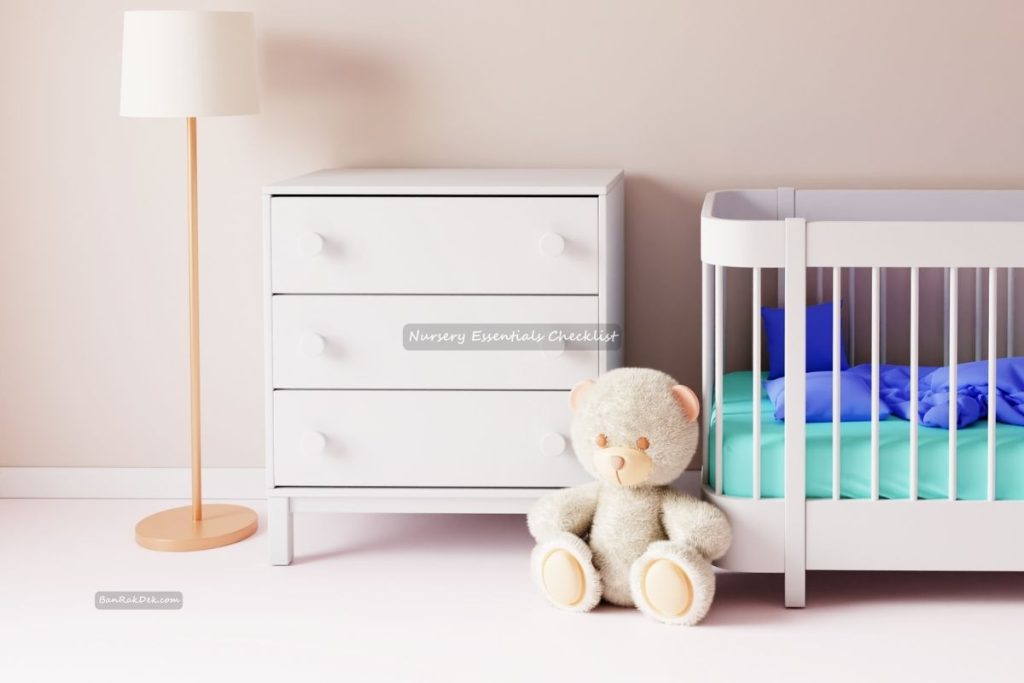
- Anchor dressers, shelves, and wardrobes.
- Check for protruding screws or splinters; sand and seal as needed.
- Maintain safe clearances so doors and drawers don’t hit the crib.
Sleep zone
- Firm, flat mattress with a snug fitted sheet—nothing else.
- Confirm slat spacing and hardware integrity.
- Keep mobiles safely out of reach; remove when baby can push up.
Floor & rugs
- Choose non-slip pads; tape down corners.
- Avoid loose cables; route them behind furniture with covers.
Lighting & electricity
- Use cool-touch LED lamps with stable bases.
- Cover outlets, and keep power strips inaccessible.
- Nightlights at knee height reduce glare and guide you safely.
As you finish, run the nursery safety checklist again after any new delivery or furniture shuffle. Keep a printed nursery safety checklist in a drawer so grandparents or babysitters can follow the same routine when they help.
6) Style & Personal Touch: Beauty that Works Hard
A thoughtful nursery balances aesthetics with practicality. Start with one anchoring element—a color wash, an heirloom textile, or a nature theme—then build out with breathable fabrics and wipeable finishes.
- Color story: Soft neutrals (sand, clay, sage) with a cheerful accent (sunny marigold or ocean teal).
- Materials: Look for non-toxic finishes, FSC-certified wood, and OEKO-TEX textiles.
- Cultural accents: Thai indigo pillows on the glider; a tiny khon mask print hung away from the crib; hand-woven storage baskets.
- Scent: Skip strong diffusers; keep it neutral for baby’s sensitive nose.
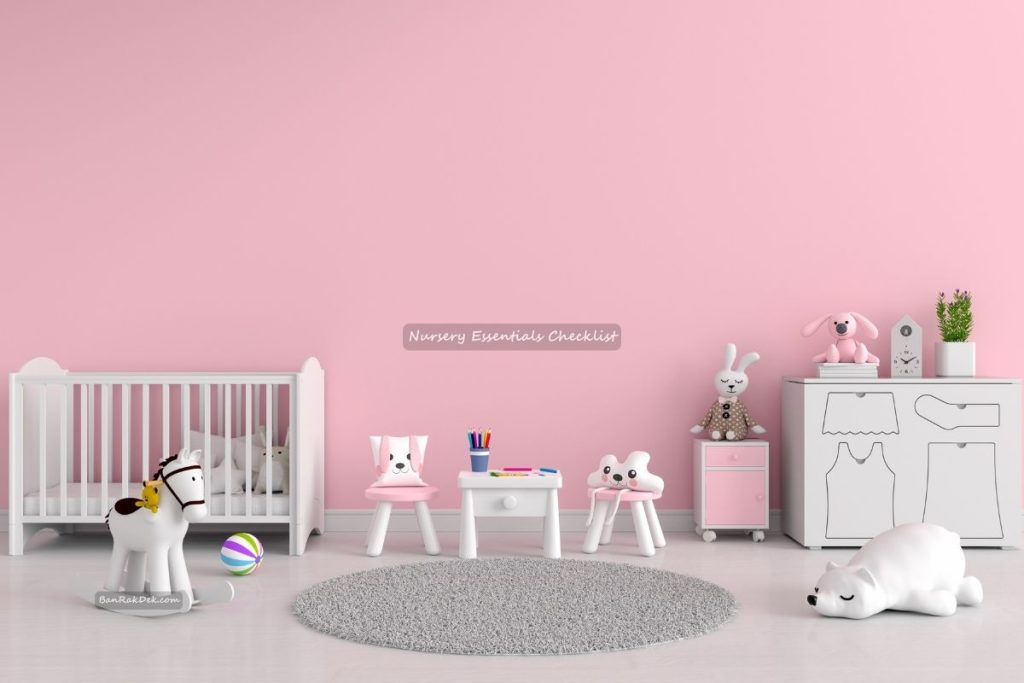
As you layer pieces, glance at your nursery essentials checklist—if it’s purely decorative and adds clutter or risk, consider swapping it for something beautiful and useful (a lidded basket, a washable throw for the chair).
7) Shopping & Budgeting: Splurge, Save, and Source Smart
You don’t need everything on day one. Prioritize what you’ll use hourly, then add the rest as routines settle.
Where to splurge
- Crib and mattress: Safety and sleep quality matter most.
- Glider/rocker: Your back will thank you.
- Blackout solutions: Better naps, better nights.
Where to save
- Décor and soft storage (bins, baskets).
- Changing accessories (a sturdy pad + washable cover is plenty).
- Non-essential gadgets—buy after you discover a real need.
Sourcing tips
- Buy secondhand thoughtfully: avoid unknown-history cribs or damaged mattresses.
- Check local Thai marketplaces and baby fairs for deals on storage and linens.
- Keep a running nursery essentials checklist on your phone so you don’t impulse-buy duplicates during sales.
8) Timeline & Preparation: From Third Trimester to Homecoming
A calm timeline avoids last-minute stress and shipping surprises.
Weeks 28–32
- Finalize budget and theme; order core furniture (crib, dresser, chair).
- Schedule assembly and anchoring hardware in advance.
Weeks 32–36
- Wash baby clothes and linens with gentle detergent.
- Set up lighting, white noise, and storage systems; label bins in English/Thai for helpers.
- Stock diapers, wipes, and creams; prep the feeding station.
Weeks 36–40
- Do a slow walk-through of the room at night to check lighting levels and pathways.
- Print or save the nursery safety checklist for the fridge.
- Pack a few labeled drawers for grandparents or postpartum helpers.
Small rituals help: place a tiny, meaningful item (a family photo, a simple bracelet) outside the crib where you can see it at 3 A.M.—a gentle reminder that you’re doing an amazing job.
Quick Reference: Essentials to Review Before Baby Arrives
- Crib + firm mattress (no extras in the sleep space)
- Anchored dresser/shelves; cords secured and outlets covered
- Breathable bedding; soft, warm-tone lighting
- White-noise machine across the room at low volume
- Smart storage labeled for caregivers
- Hygrometer/thermometer to balance AC and humidity
- Night-time pathways clear and softly lit
Conclusion: The Calm You Build Today Becomes Tomorrow’s Rhythm
When safety is woven into design, the nursery becomes a place where everyone relaxes. You’ve planned flow, layered cozy textures, and anchored what matters—all while keeping hazards out of the picture. Keep your phone list short, your surfaces clear, and your routines simple. For new purchases or seasonal changes, run the nursery safety checklist again, and enjoy the peace of mind that comes from intention. The result is a room that works at 3 P.M. and 3 A.M.—a sanctuary built on care, culture, and common sense.
📌 FAQs with SEO-friendly Answers
1. What is included in a nursery essentials checklist?
A nursery essentials checklist includes a crib, firm mattress, dresser or changing table, storage solutions, lighting, and cozy textiles. It ensures you have everything needed for comfort and care.
2. Why is a nursery safety checklist important?
A nursery safety checklist helps parents secure furniture, cover outlets, manage cords, and follow safe sleep practices. It reduces hazards and keeps your baby’s room accident-free.
3. How do I set up a small nursery layout?
In a small nursery layout, use vertical storage, under-crib bins, and multi-purpose furniture. Keep the crib away from windows and anchor all tall furniture for safety.
4. What are cozy nursery ideas that are also safe?
Cozy nursery ideas include soft lighting, breathable cotton bedding, blackout curtains, and eco-friendly décor. Always avoid crib bumpers, pillows, and heavy wall art above the crib.
5. When should I complete my nursery setup?
Most parents finish their nursery setup by week 36 of pregnancy. Following a third-trimester nursery checklist ensures all essentials and safety measures are ready before baby arrives.



